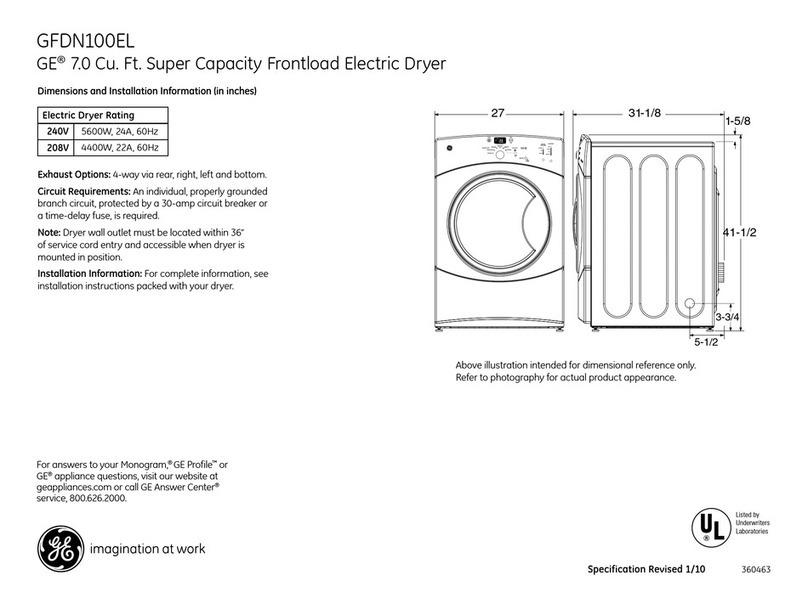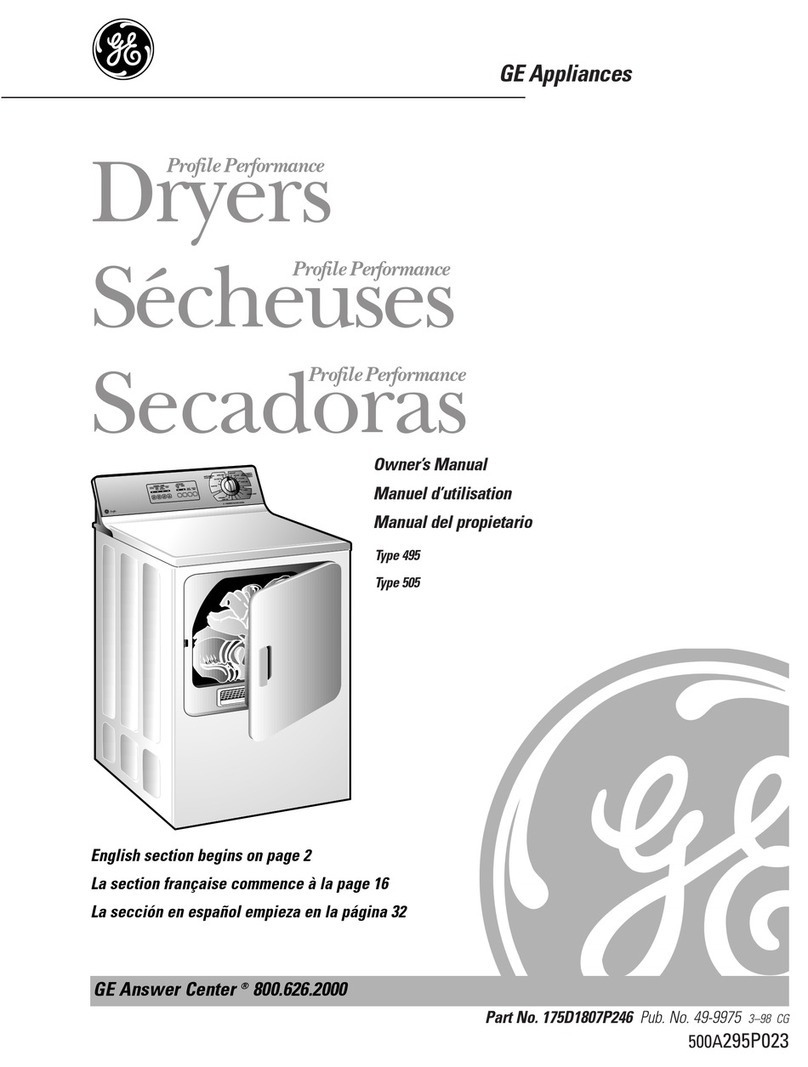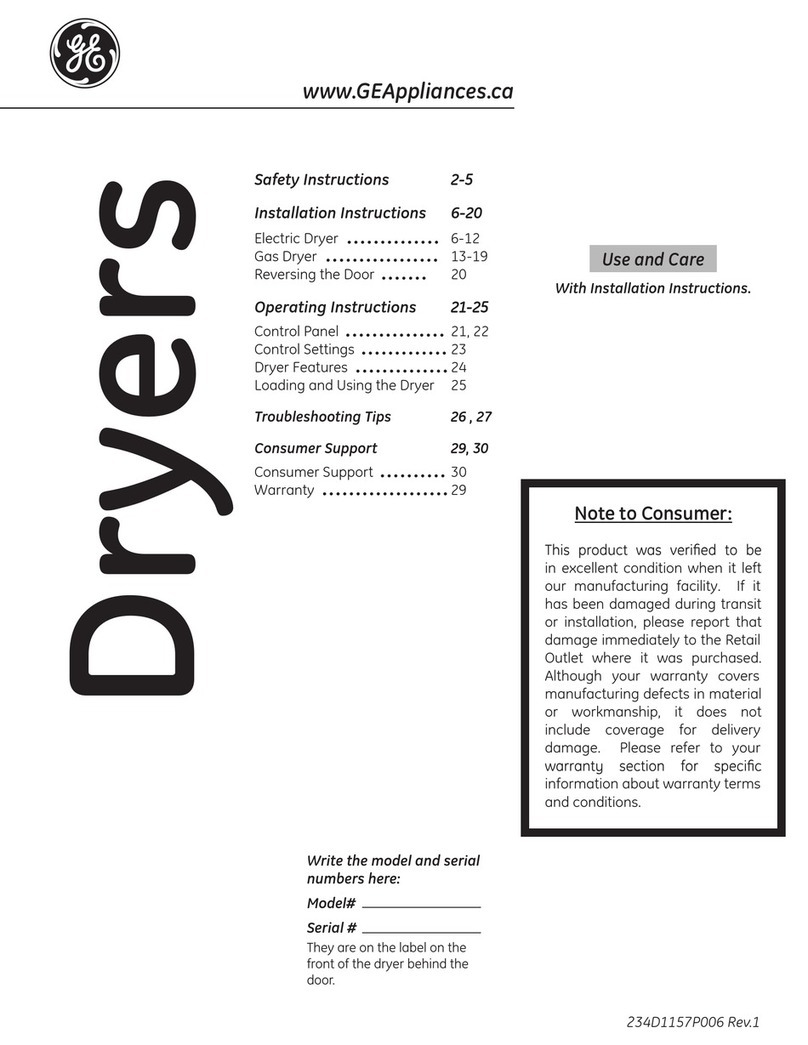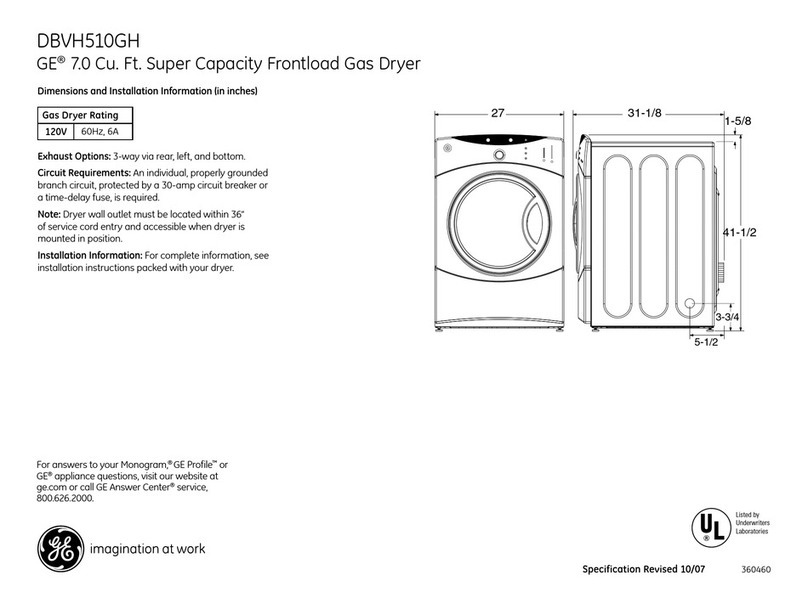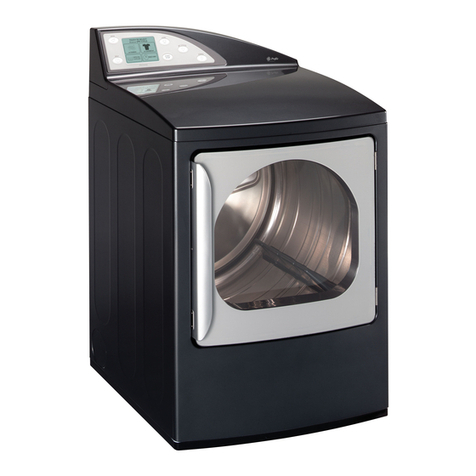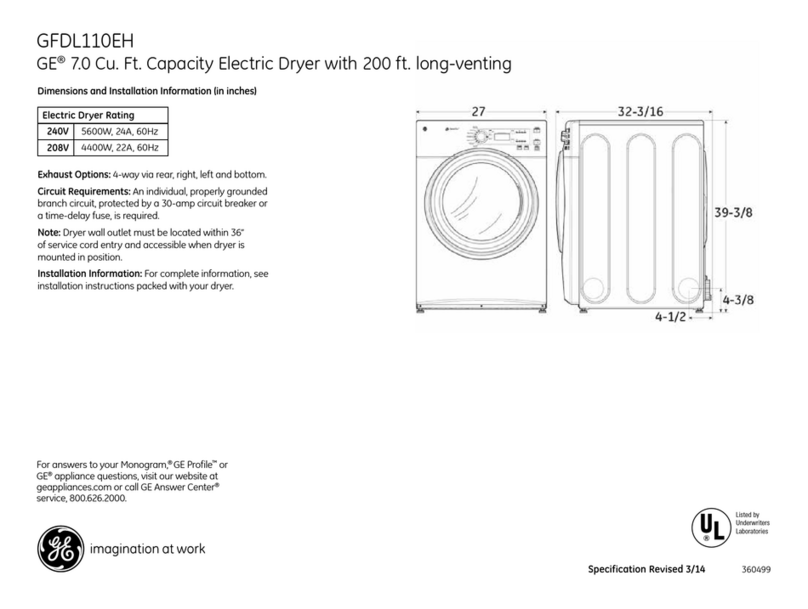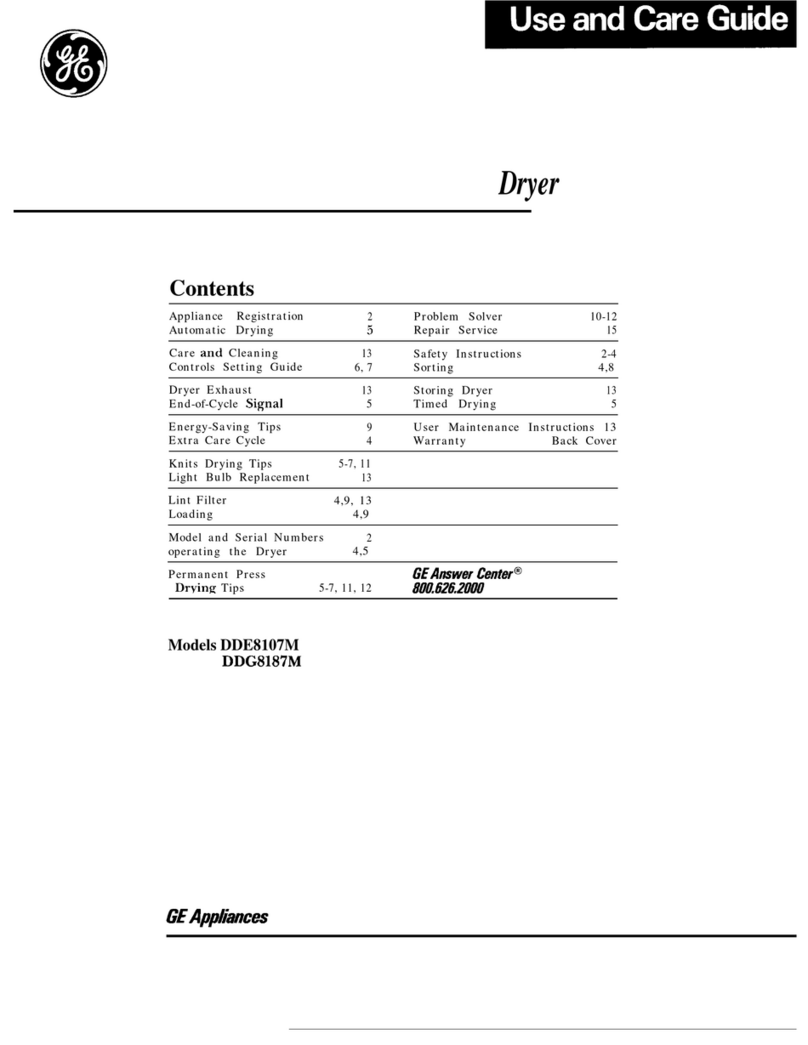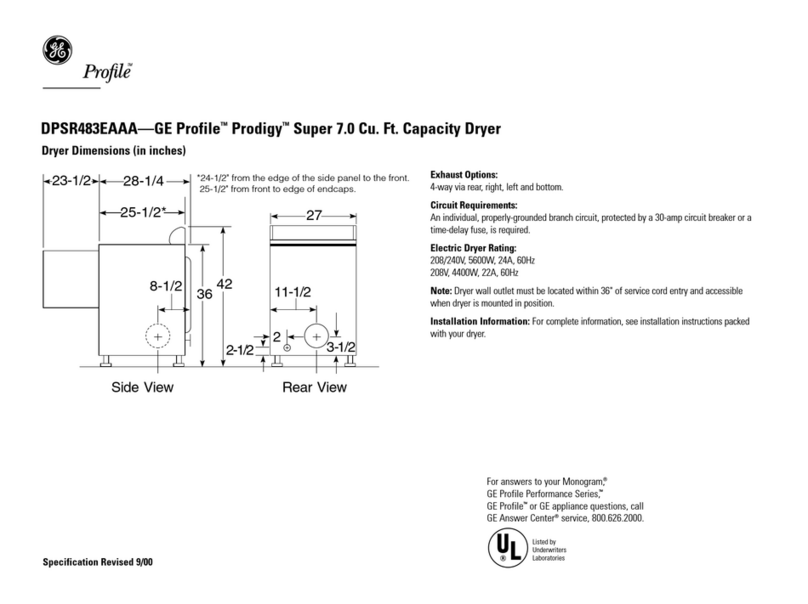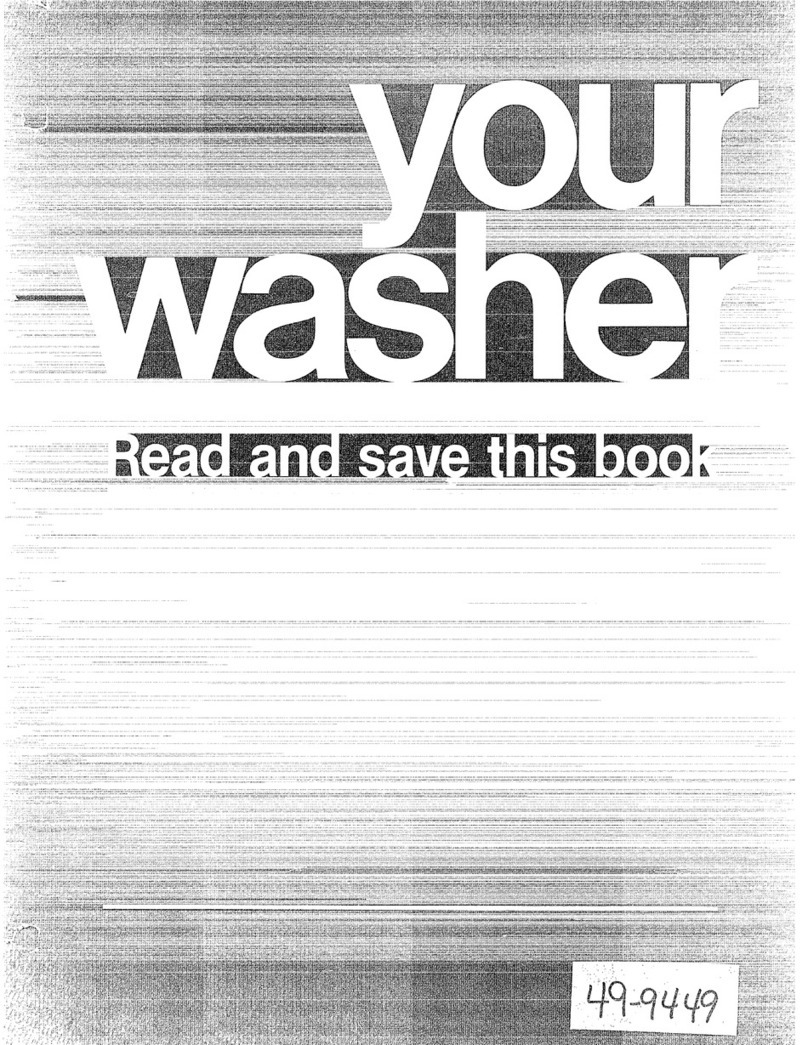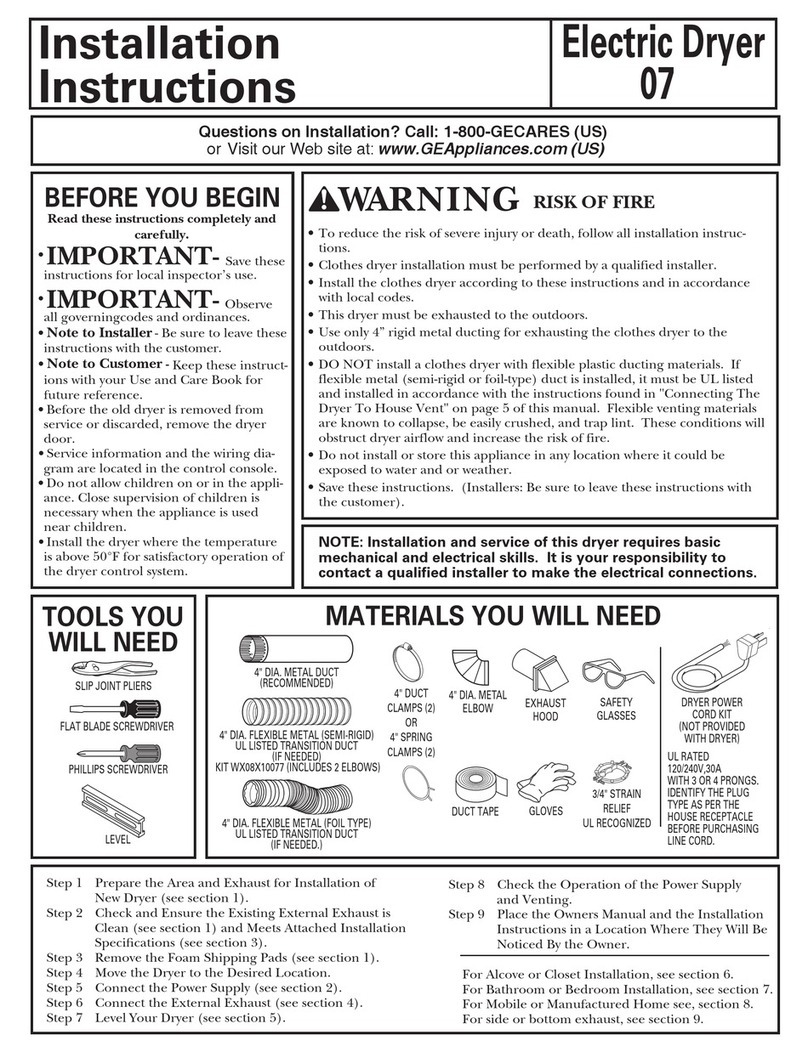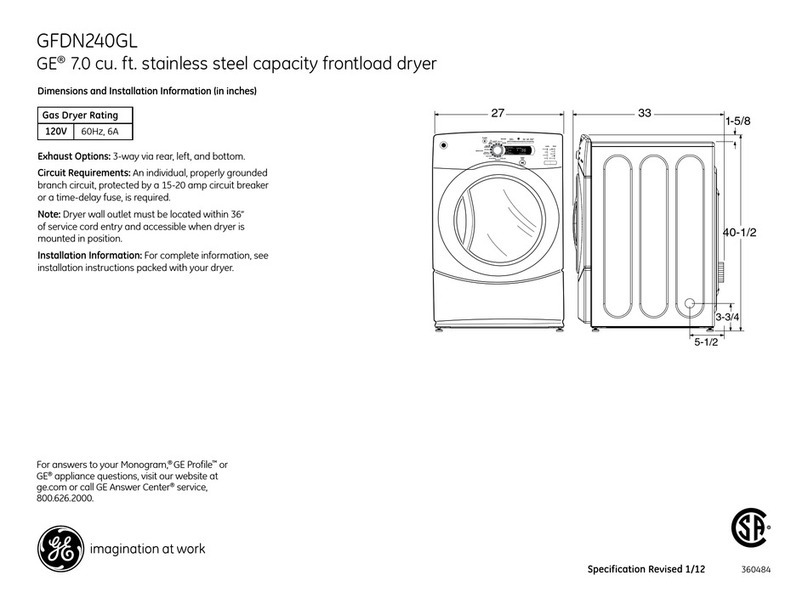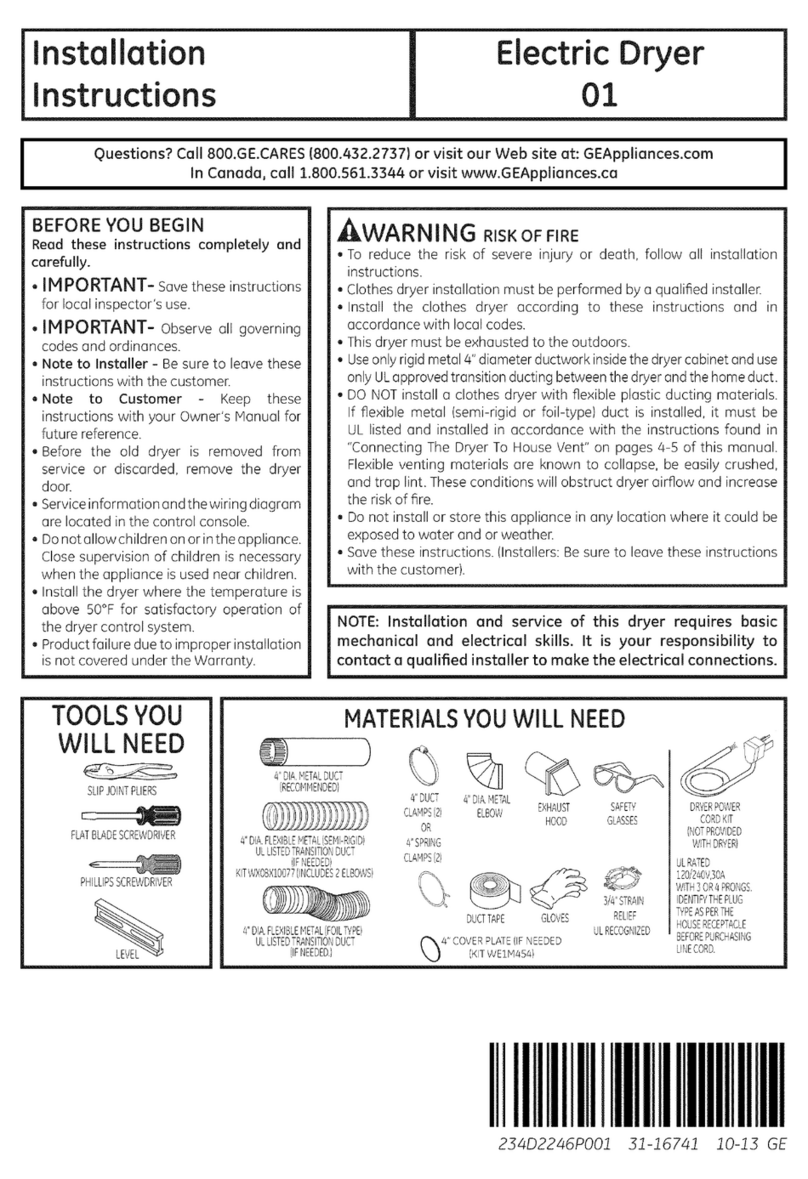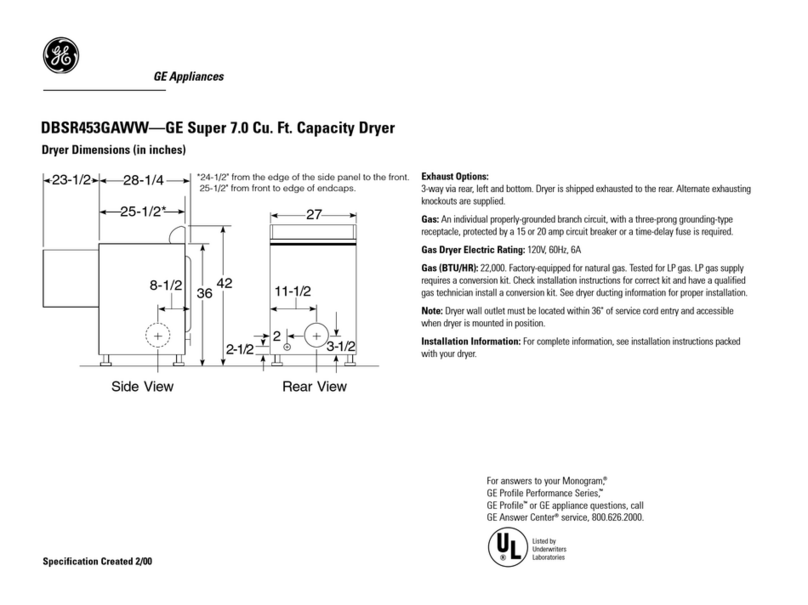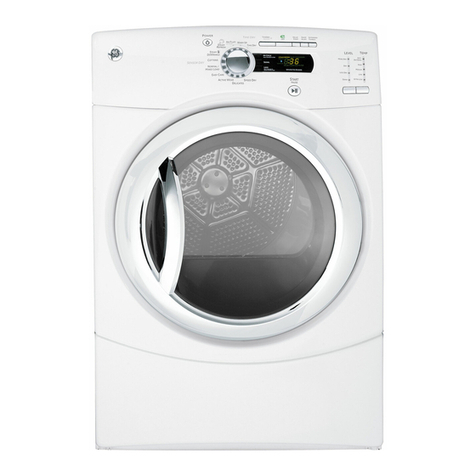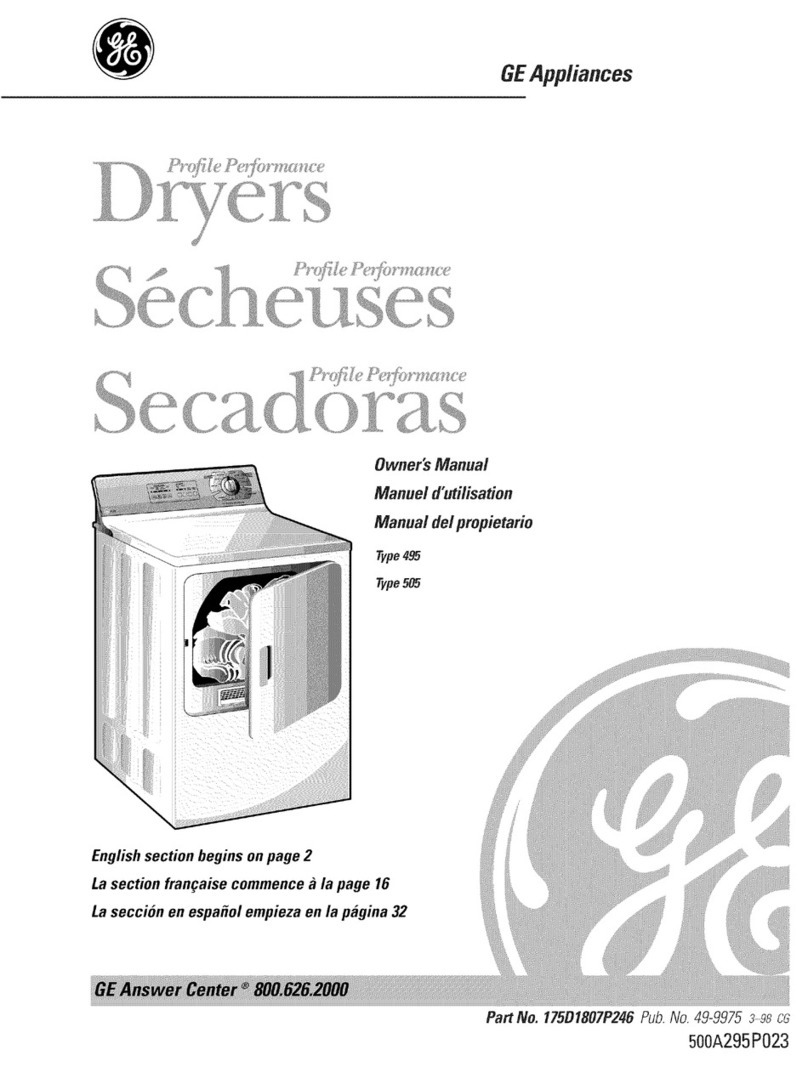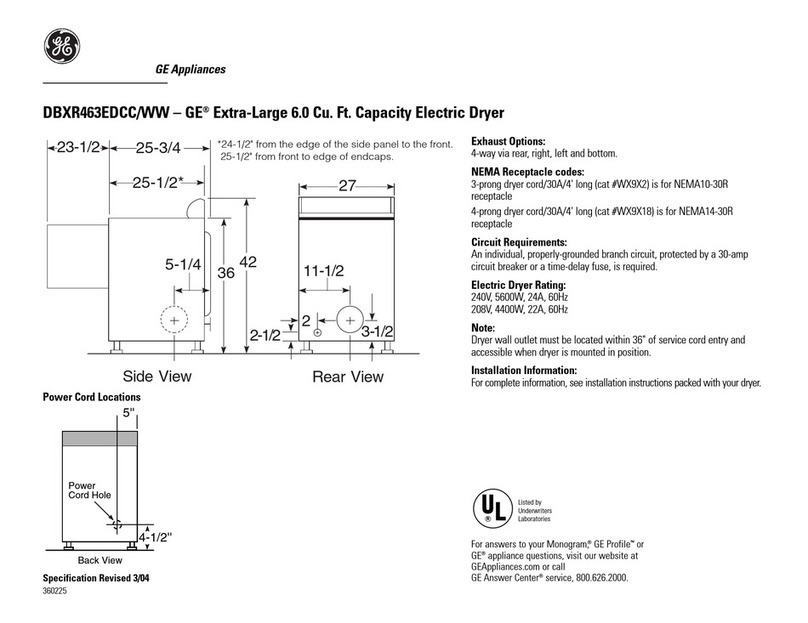w
IMPORT~T
SAFETY NOTICE
The California Safe Drinking
Water and Toxic Enforcement Act
requires the Governor of California
to publish a list of substances
known to the state to cause cancer,
birth defects or other reproductive
harm and requires businesses to
warn customers of potential
exposure to such substances.
Gas appliances can cause minor
exposure to four of these substances,
namely benzene, carbon monoxide,
formaldehyde and soot, caused
primarily by the incomplete
combustion of natural gas or LP
fuels. Properly adjusted dryers will
minimize incomplete combustion.
Exposure to these substances can
be minimized further by properly
venting the dryers to the outdoors.
WARNING-To reduce the risk
of fire, electric shock, or injury
to persons when using your
apphc%
foflow
basic
p-utions,
including the following:
●
Use this appliance only for its
intended purpose
as described in
this Use and Care Book.
●
This dryer must be properly
instilled and located in
accordance with the Instillation
Instructions before it is used.
If
you did not receive an Installation
Instructions sheet with your dryer,
you can obtain one by contacting
the service location nearest you.
—Properly ground to conform
with all governing codes and
ordinances. Follow details in
Insbllation
Instructions.
—Locate where the temperature
is above
50°F.
(lO°C.)
for
satisfactory operation of the
dryer control system. Do not
instill or store the dryer where it
will be exposed to the weather.
–Connect to a properly rated,
protected and sized power-supply
circuit to avoid electrical overload.
—Exhausting to the outside is
STRONGLY RECOMMENDED
to prevent large amounts of
moisture and lint from being blown
into the room. Carefully follow the
Exhausting
Detis
in the
bstiation
Instructions.
●
When disconnecting this
appliance pull by the plug rather
than the cord to avoid damage to
the cord or junction of cord and
plug. Make sure that the cord is
located so that it will not be stepped
on, tripped over or otherwise
subjected to damage or stress.
●
Do not repair or replace any
part of the appliance or attempt
any servicing unless specifically
recommended in this Use and
Care Book or in published
user-
repair instructions that you
understand and have the skills to
carry out.
To minimize the
Wssibtiity
of a fire
h=rd.
. Do not use heat to dry articles
containing rubber, plastic, or
simtiar
materiah
(such as padded
bras, tennis shoes, galoshes, bath
mats, rugs, bibs, baby pants,
p~c
bags, etc.) as these materials may
melt or burn. Also, some rubber
ma@riak,
when h=ted,
m
under
certain circumstances produce
fire by spontaneous combustion.
● Garments labeled “Dry Away
From Heat” (such
as
life jackets
containing Kapok) must not be put
in your dryer.
●
Do not wash or dry articles
that have been cleaned in, washed
in, soaked in, or spotted with
combustible or
~losive
substances
(such as wax, paint, gasoline,
degreasers,
dry-cleaning
solvents, kerosene, etc.) which
may ignite or explode. Do not use
or store such substances on/or
around your washer and/or dryer
during operation.
●
Any article on which you have
used a cleaning solvent, or which
contains flammable materials
(such as cleaning cloths, mops,
towels used in beauty salons,
restaurants or barber shops, etc.)
must not be placed in or near the
dryer until all traces of these
flammable liquids or solids and
their fumes have been removed.
There are many highly flammable
items used in homes such as:
acetone,
denaturd
alcohol,
gasoline, kerosene, some
household cleaners, some spot
removers, turpentines, waxes, wax
removers and products containing
petroleum distillates.
●
Clean the lint filter before each
load to prevent lint accumulation
inside the dryer or in the room.
DO NOT OPERATE THE
DR~R
WITHOUT THE LINT
FILTER IN PLACE.
. Keep area around and
underneath your appliance free
from the accumulation of
combustible materials, such as
lint, paper, rags, chemicals, etc.
● Do not store items that may bum
or melt (such as clothing, paper
material, plastics or plastic
containers, etc.) on top of the dryer
during operation.
. The interior of the machine
and the exhaust duct connection
inside the dryer should be
cleaned periodically by a
qualified individual.
Q
Exhaust duct (see installation
instructions). Use only metal
duct inside dryer or for
exhausting dryer to the outside.
To
minitie
the
Wssibility
of
i~ury.
●
Never reach into the dryer
wtie
the drum is moving. Before loading,
unloading or adding clothes, wait
until the drum has completely
stopped.
●
Close supervision is necessary
if this
apptiance
is used by or near
children. Do not
aBow
children to
3
